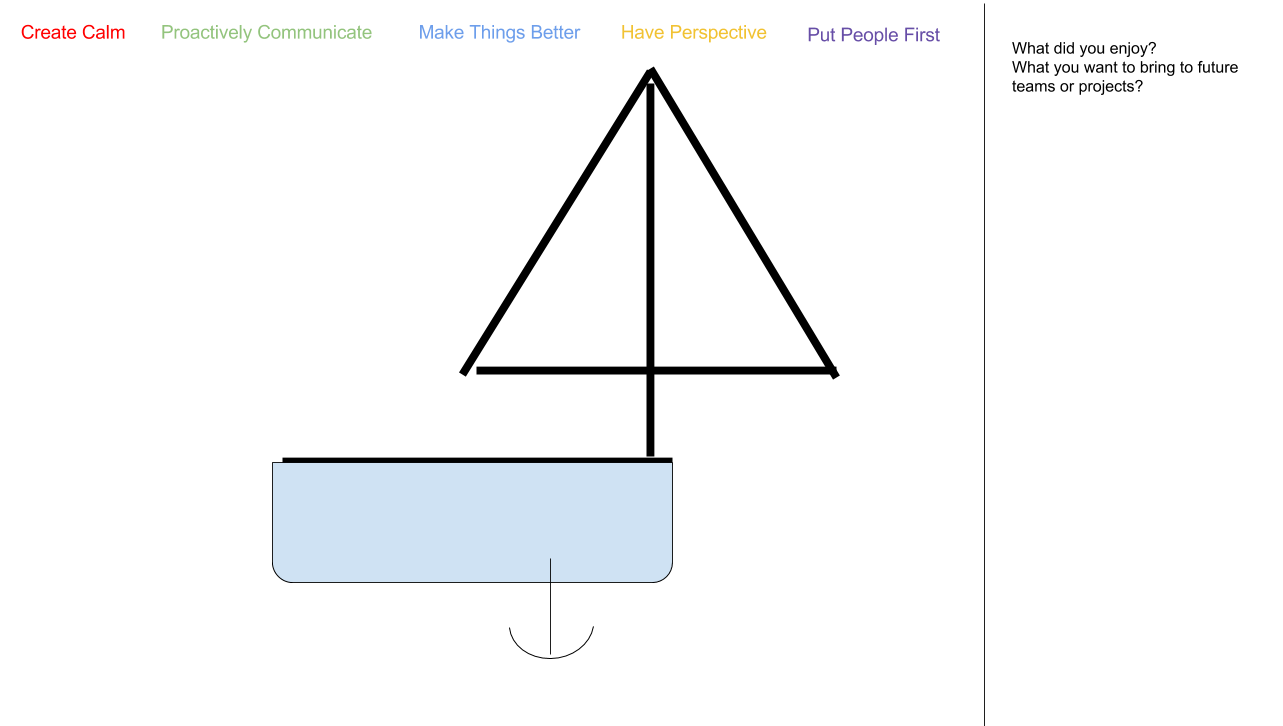Tailoring Retrospectives by Using Core Values
How to run a retrospective that takes your company's core values into account
Sailboat by https://pixabay.com/en/users/grigiotitanio-1530736/ is licensed under Creative Commons CC0
A company’s core values define who they are. They help define and guide a company and all its employees. Recently, we articulated our core values at Collective Idea. Our core values are Create Calm, Proactively Communicate, Make Things Better, Have Perspective, and Put People First. It’s important, but difficult to incorporate core values into your day-to-day routine. Often, you ask about them when you’re interviewing, read about them your first few days, and they might resurface periodically in performance review season or as posters on the wall, but it’s more difficult to keep them front-of-mind.
As we finished up a client project, I experimented with creating a project retrospective that forced our team to look at the project through the prism of our core values. It was a successful experiment so I thought I would share.
We used the basis of the sailboat retrospective as the structure of our retrospective. The sailboat retrospective involves drawing a boat with a sail and an anchor on a whiteboard. Then you add post-its around the sail for what propelled the project forward and add more post-its around the anchor for what slowed the project down.
Since we’re a remote team, we did away with a whiteboard and instead I drew a sailboat on a Google drawing. I then listed our core values at the top in different colors.

We spent 10 minutes going through each core value. For each core value, we first read the company blurb about them and posted that on the page to keep that in mind as we evaluated it. We then talked about and wrote down what propelled us forward and helped us work in accordance with that core value. We also talked about what weighed us down and made it more difficult for us to fulfill that core value as employees working on this project.
Notes were taken in the same color as the core value was at the top of the page. Just like we would do with post-its, things that propelled the project were written by the sail (or in the top half of the drawing) and things that weighed us down went by the anchor (or in the bottom half of the drawing).
We ended by going around and saying one thing we each enjoyed most about the project and one thing we learned that we hope to bring to future projects and future teams.
This retrospective format was a great way to think about the project and look at what went well and what could have been improved through the lens of our core values and how we want to keep our core values in mind for future projects.

Comments